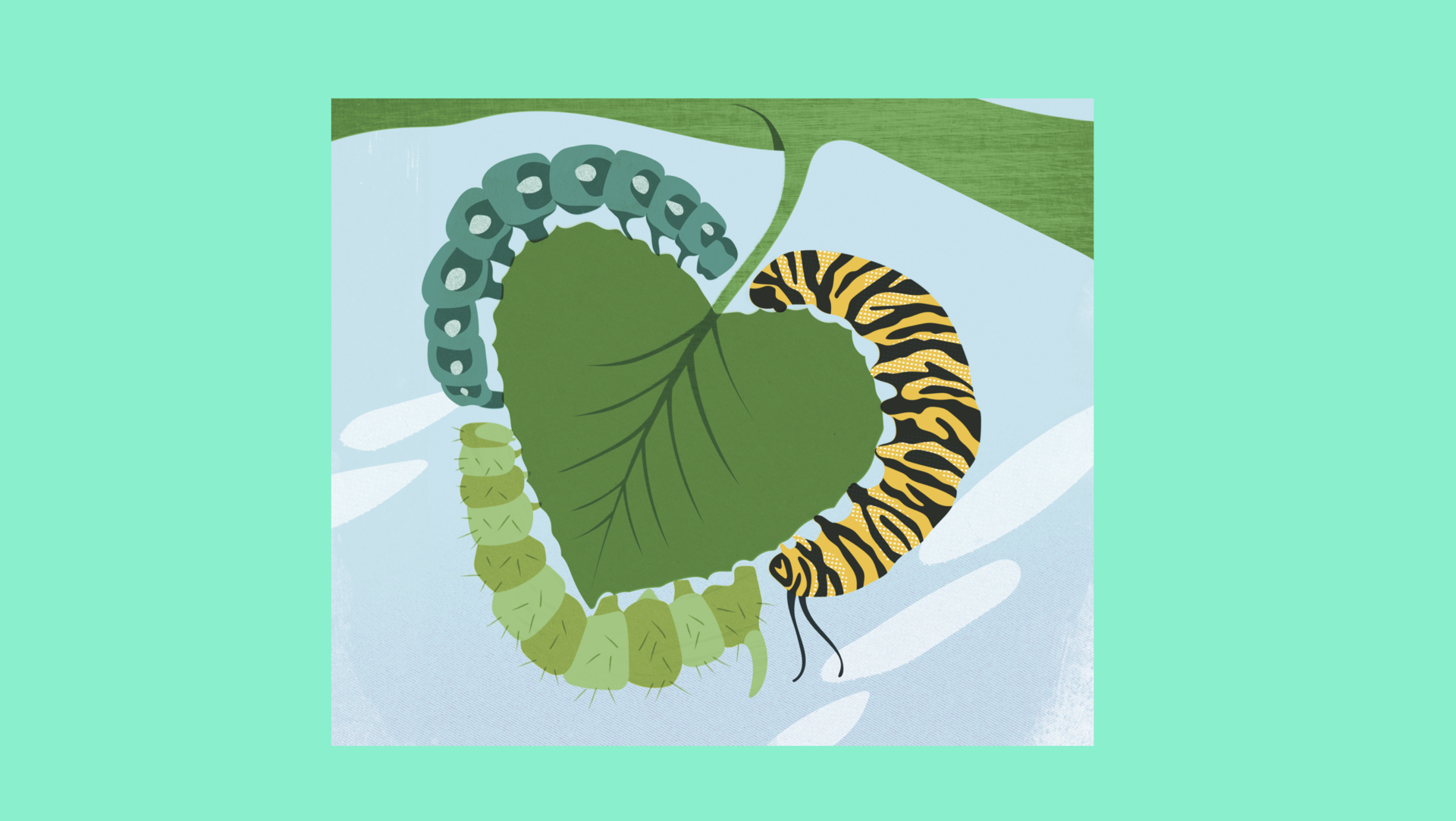Sixties pop icon Donovan once sang ‘caterpillar sheds its skin to find a butterfly within’. Now I don’t know whether Donovan knew, for the sake of poetry, that he was being biologically inaccurate (caterpillars actually shed their skin to find a chrysalis within). Ray Davies also mentioned a caterpillar briefly at the beginning of the hit Kinks song Autumn Almanac (‘on the new soft hedge creeps a crawly caterpillar’). Caterpillars for many people are indeed ‘creepy crawlies’ but like puppies, bear cubs, ducklings and even children, caterpillars can be more interesting, lovable and charismatic than the adults they grow up to be!
Butterflies and moths do not ‘grow’, all the growth occurs as a caterpillar. To eat and survive is the caterpillar mantra. To that end, caterpillars have evolved a remarkable range of strategies and adaptations. Caterpillars come in all shapes and sizes. Some are incredibly camouflaged and hidden from view while others shout their presence by being colourful and usually distasteful or poisonous. Some are spiny and others are incredibly hairy; both types are physically unpalatable. Some caterpillars recruit ants for protection and reward the insect bouncers by supplying them with sugar. Others propel their poop to put predators off the scent. Others will pretend to be snakes by puffing up their bodies and displaying ‘snake eyes’. All of this is bluster and empty threats though because nearly all caterpillars are unable to inflict lethal damage to their adversaries.
It is not just birds, wasps, and mice that see caterpillars as tasty morsels. Did you know that caterpillars of certain silk and hawk moths form part of the diet of millions of people in Africa? More protein-rich than the farm animals we eat, tasty caterpillars are now being farmed in many developing countries for human consumption. An estimated 10 billion caterpillars are harvested annually in Africa alone. Recently, scientists discovered that caterpillars of the wax moth are able to eat plastic raising the possibility that these caterpillars could help us degrade and recycle the billions of plastic bags we produce!
So caterpillars are fascinating and useful. They are also powerful. Some prisoners rearing Monarch butterfly caterpillars in a western US prison see the metamorphosis before them as a metaphor for their own lives. “If they can change so can I”. Caterpillar rearing has demonstrably improved the mental health and lives of these felons.
But when was the last time you saw a caterpillar? Butterfly, moth and caterpillar populations are declining worldwide as we destroy or change their habitats. They are the 21st canary in the coalmine, a bellwether of environmental change. We can all help bring caterpillars back by making our gardens friendlier to them by growing the plants they need and not using pesticides. Our gardens and lives will be richer for the presence of caterpillars.
David G James is lead author of The Book of Caterpillars published by Ivy Press, RRP £30.





